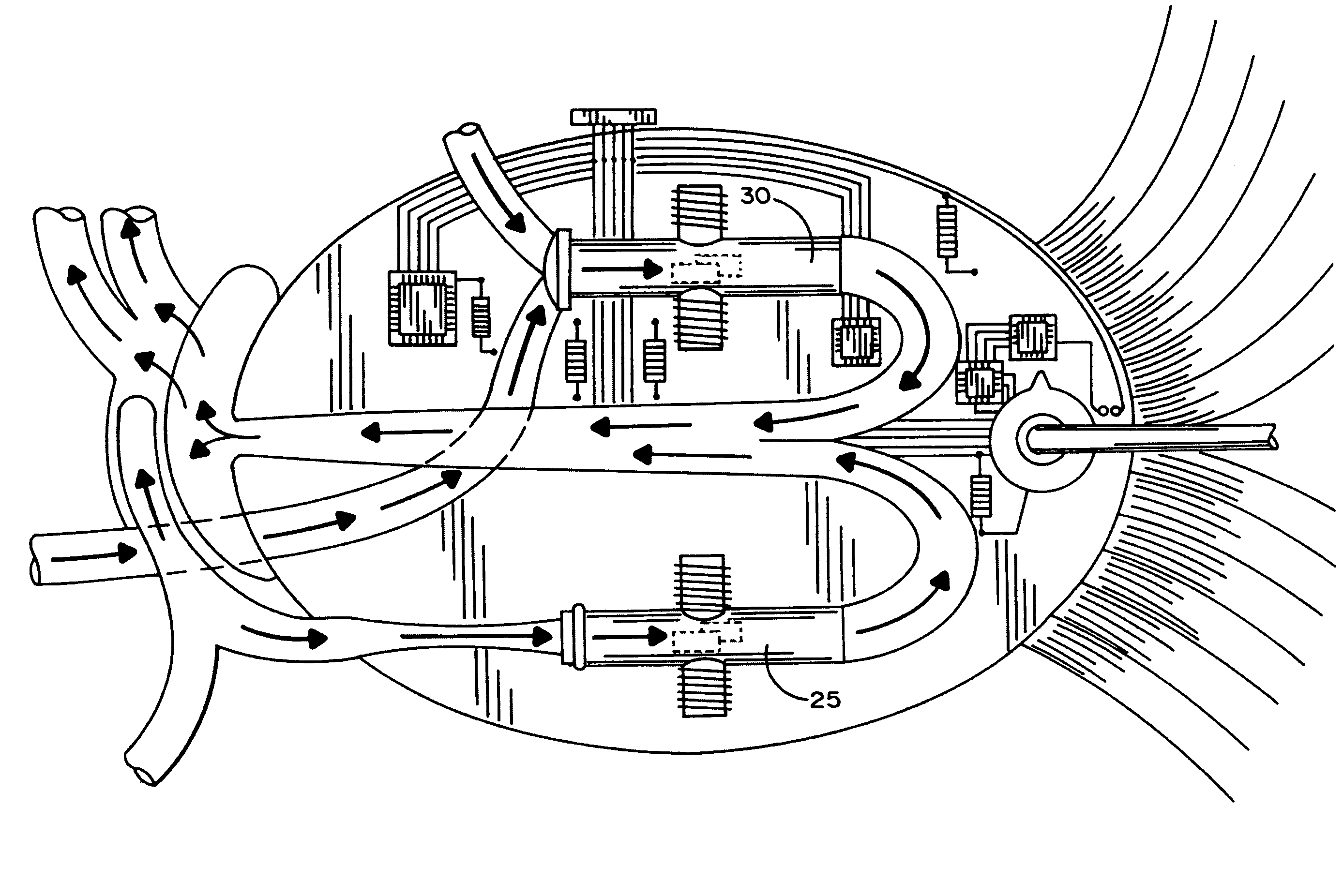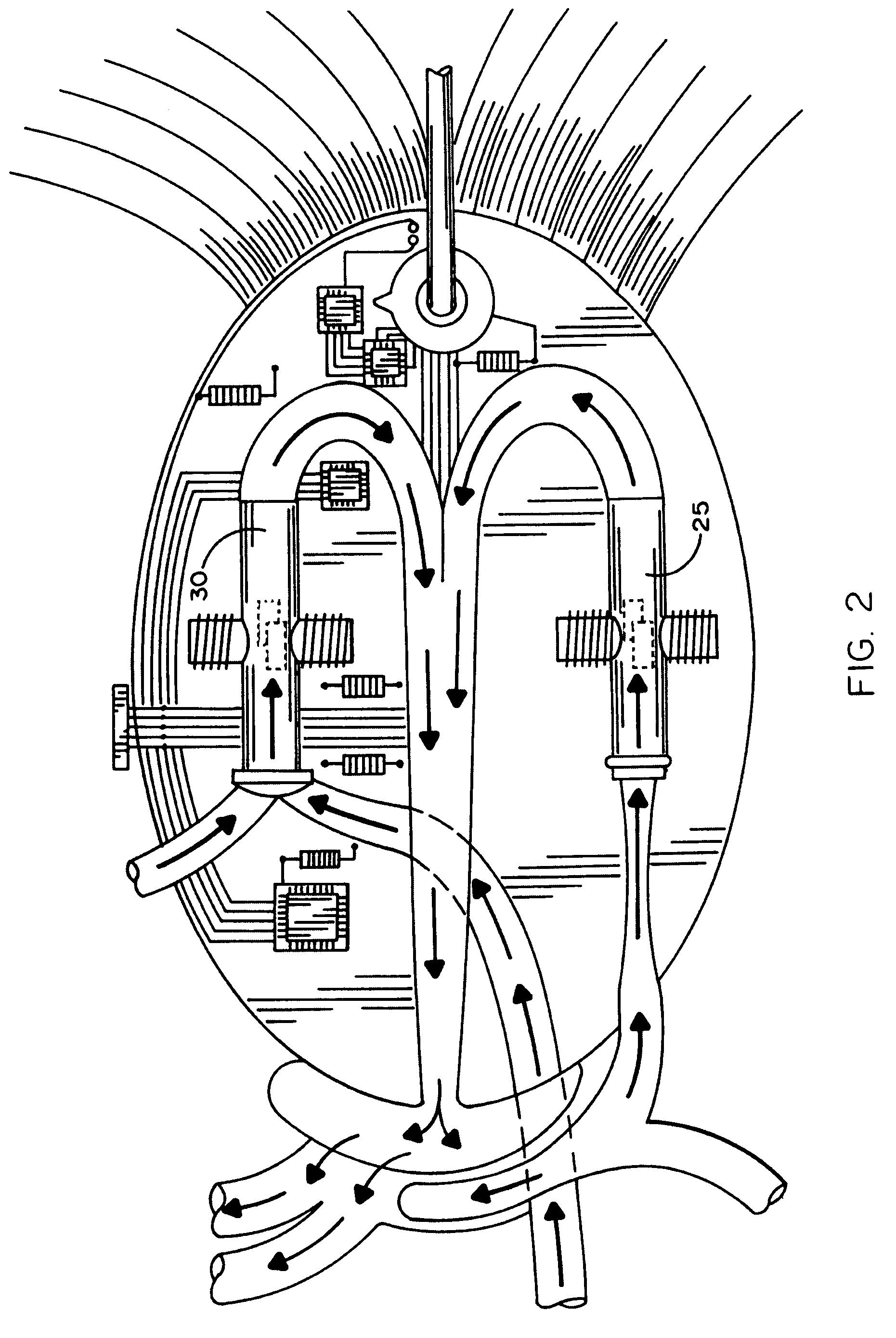Artificial heart using magnetohydrodynamic propulsionh
a technology of magnetohydrodynamic propulsion and artificial heart, which is applied in the field of manmade devices, can solve the problems of limited use time, 3,000 human hearts become available, and use of moving parts
- Summary
- Abstract
- Description
- Claims
- Application Information
AI Technical Summary
Benefits of technology
Problems solved by technology
Method used
Image
Examples
Embodiment Construction
[0036]Referring to the accompanying drawings and initially to FIGS. 1(a) and 1(b), it will be seen that a propulsion unit 10 comprises a flow tube 12 and a coil core 14. The tube 12 and core 14 intersect at an interactive chamber 16 in which there are located at least two electrode plates 18 for generating an electric field within chamber 16 which field is perpendicular to the direction of flow through tube 12. Each side of core 14 is wound with an inductive coil 20 to generate a magnetic flux field within chamber 16 that is orthogonal to both the direction of flow and the electric field. The resulting propulsion force {right arrow over (F)} is given by the equation:
{right arrow over (F)}=nq{right arrow over (vd)}×{right arrow over (B)}
where n=number of charge carriers; q=electric charge, e=1.602×10−19 Coulombs, vd=drift velocity of charge carriers across a voltage gradient {right arrow over (E)}=−{right arrow over (∇)}V; {right arrow over (B)}=magnetic flux density vector {right ar...
PUM
 Login to View More
Login to View More Abstract
Description
Claims
Application Information
 Login to View More
Login to View More - R&D
- Intellectual Property
- Life Sciences
- Materials
- Tech Scout
- Unparalleled Data Quality
- Higher Quality Content
- 60% Fewer Hallucinations
Browse by: Latest US Patents, China's latest patents, Technical Efficacy Thesaurus, Application Domain, Technology Topic, Popular Technical Reports.
© 2025 PatSnap. All rights reserved.Legal|Privacy policy|Modern Slavery Act Transparency Statement|Sitemap|About US| Contact US: help@patsnap.com



